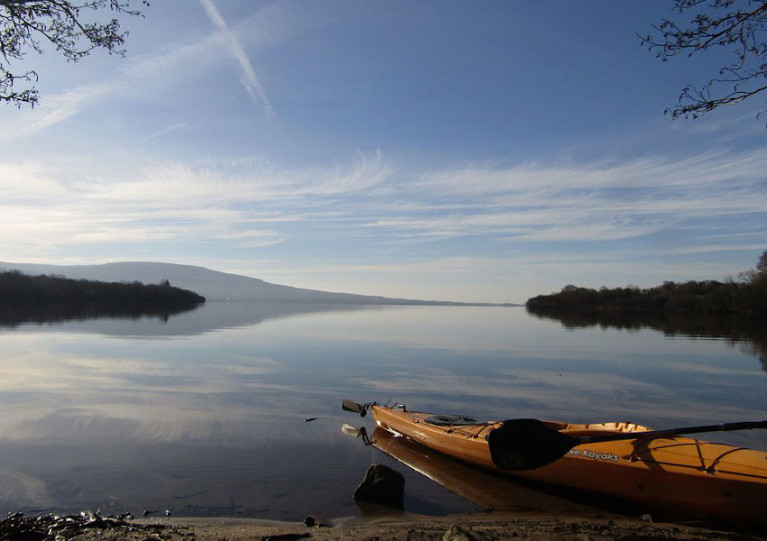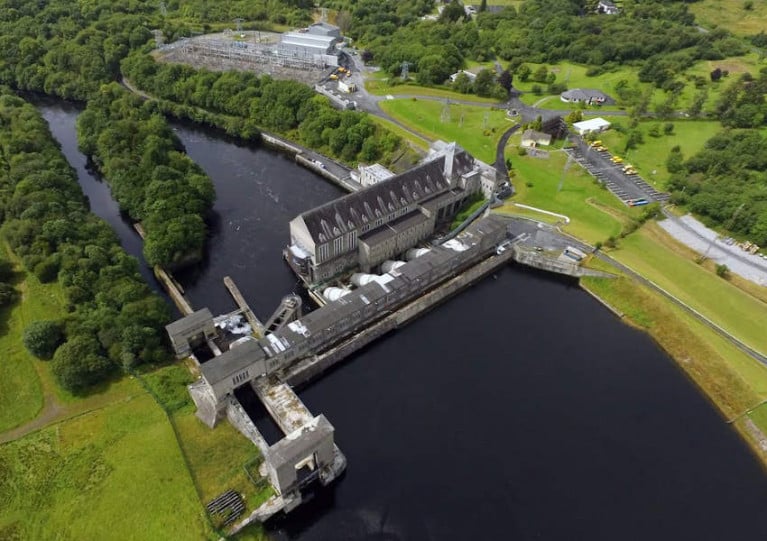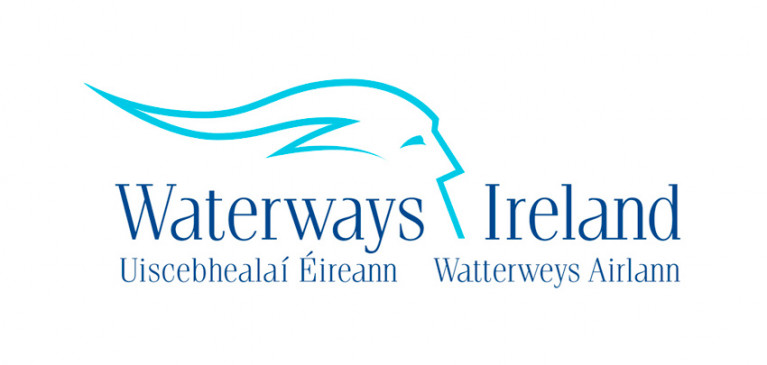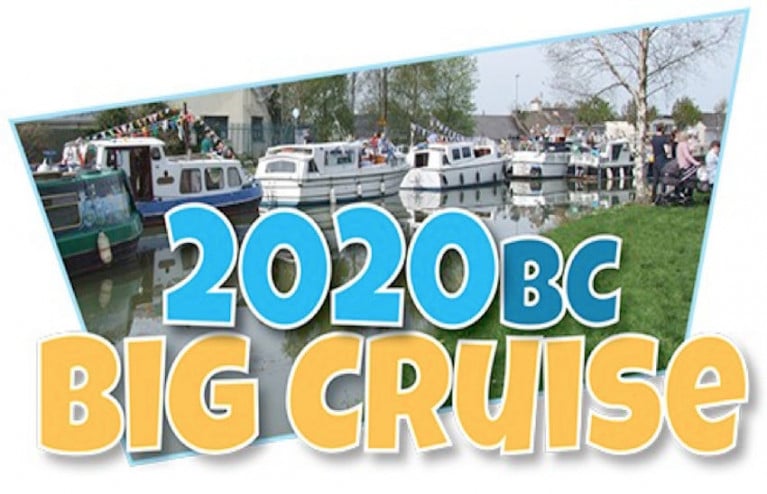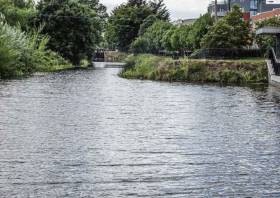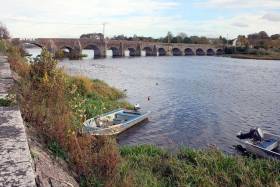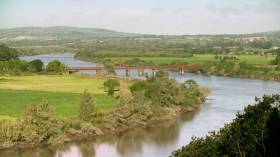Displaying items by tag: Waterways Ireland
Shannon Navigation Advisory Over Fisheries Survey Nets On Lough Allen
Waterways Ireland advises all masters of vessels and water users that Inland Fisheries Ireland (IFI) will be placing fisheries survey nets on Lough Allen from today, Tuesday 21 January to this Thursday 23 January.
The nets will be in the waterway during daytime and night-time and will be marked with buoys.
Vessels in this part of the Shannon Navigation should proceed with additional caution during this period.
Lough Erne Locals Called To Share Folklore, Histories & Stories For Spiritual Trail Project
Shared stories of folklore and the history of spiritual sites around Lough Erne will be the subject of a public meeting at Waterways Ireland HQ in Enniskillen later this month.
Hosted by Waterways Ireland in partnership with the Lough Erne Landscape Partnership, the community outreach event encourages locals around the Fermanagh waterway to drop in and share their stories and folk tales, as well as memorabilia and photographs, that only they would have.
Doors will be open from 1pm to 8pm on Monday 27 January, with the Centre for Data Digitisation and Analysis at Queen’s University Belfast on hand to record these oral histories and more for posterity.
The project will also inform the development of the Lough Erne Spiritual Trail, an initiative of Waterways Ireland and the Lough Erne Landscape Partnership.
Eleven significant spiritual and/or ecclesiastical sites have been selected, including Devenish Island, White Island (North), Davy’s Island, Inishmacsaint, Caldragh (Boa Island), Cleenish, St. Ronan’s Aghalurcher, Galloon, Killadeas, Derryvullen and Tievealough.
Notice Of Upcoming Ardnacrusha Lock Closure
Waterways Ireland wishes to advise all masters of vessels and water users that the lock at Ardnacrusha power plant on the River Shannon will be closed for six weeks from Monday 20 January to Monday 2 March to facilitate essential maintenance works.
The cross-border body for Ireland’s inland waterways apologises for any inconvenience caused and thanks all vessel owners for their co-operation.
Waterways Ireland marks the New Year with a Special Marine Notice providing general information for boaters and users of Ireland’s inland waterways.
Masters and owners are strongly recommended to check the Waterways Ireland website for general information about the waterways and in particular the Marine Notices section which gives current operational information about the individual navigations such as works in progress, passage restrictions and more.
This Special Marine Notice contains advice and information on water safety, registration of vessels, usage permits and lock passage, berthing details and mooring limits, events taking place on the waterways in 2020, and much more.
The full notice can be found on the Waterways Ireland website HERE.
Waterways Ireland Launches 2020 Event Programme
Applications are open until Wednesday 15 January for the 2020 Waterways Ireland Event Programme, which aims to support events on or along Ireland’s inland waterways throughout the year.
Taking place annually for the past 13 years, the programme has supported competitions, learning experiences and community, historical and educational events for people with and without disabilities across thousands of communities nationwide.
Involving angling, canoeing, rowing, sailing and power sports, arts, history, drama and learning new skills, Waterways Ireland these events have most importantly been about having fun.
Sharon Lavin of Waterways Ireland said: “The new vision for the Event Programme will activate event organisers to consider how they can build in ongoing activity and sustained use of the waterways corridors into their event.
“Tourism and participation in recreation has a social and economic impact in waterfront communities, and events are a great way to engage communities with previously under-utilised waterways.”
The application form (with guidance notes) can now be viewed and completed online. Terms and conditions apply. The closing date the receipt of completed applications is Wednesday 15 January.
New Year’s Day Flotilla To Launch 2020 Big Cruise Calendar For ‘Green & Silver’ Inland Navigations
The Inland Waterways Association of Ireland (IWAI) is ringing in the New Year with the launch of its 2020 Big Cruise calendar of events on the inland waterways of the Green & Silver route.
A flotilla of light and fast boats set off at pace on the River Liffey from the sea lock at Grand Canal Dock to Seán Heuston Bridge below Heuston Station this lunchtime (Wednesday 1 January) to kick off the 2020BC initiative.
The date also marks the 60th anniversary to the day the Grand Canal was closed to commercial traffic by CIÉ.
2020BC will centre around a calendar of waterside community celebrations and events to which boaters and other waterway users can travel next year.
This reflects the navigation circuit being very much ‘open for business’ for leisure, pleasure and amenity use.
The 2020BC project is being co-ordinated for IWAI Dublin by longtime waterways advocate Mick Kinahan with support from IWAI’s Kildare, Offaly, Shannon Harbour, Royal Canal and Barrow Branches.
Today’s flotilla also carries some offerings from the Grand Canal to Heuston Station — symbols from locations along the canal’s length, of both past and present commercial and leisure activities.
Little known outside the boating community, the Grand Canal is also part of what is known as the Green & Silver: a navigation route comprising the Royal Canal, Camlin River, River Shannon, Grand Canal and River Liffey — and one that the IWAI is keen to promote during 2020BC and beyond.
IWAI president Alan Kelly said: “We are fortunate in IWAI to have experienced volunteers who are fully committed to the promotion of our waterways for the common good and the socio-economic benefit of all.
“We also have an excellent working relationship with Waterways Ireland and with Government departments, local authorities, development associations and community organisations all along the inland waterways network.
“We look forward to 2020 being a year of further positive engagement with all of our waterways partners to promote the development and improvement of our waterways.”
Jim O’Riordan, IWAI Dublin chairperson, added: “IWAI Dublin look forward to 2020BC and are grateful for the support from our peer IWAI branches around the inland waterways network for the project.
“We also want to thank Waterways Ireland who have been involved in helping us plan today’s launch and events for the coming year; and Clontarf and Poolbeg yacht clubs among others who have assisted arrangements for the launch flotilla.
“For 2020BC, what we are promoting is not just about boating, we intend to work with as many communities as possible to develop their interests further in the inland waterways in their vicinities and look forward to meeting many new waterways friends.”
Full details of events for 2020BC will be made available on the IWAI website.
Waterways Ireland Warns Of Reported Leptospirosis On Royal Canal
Waterways Ireland have been notified by the HSE of a number of cases of Leptospirosis reported recently following exposure to the water on the Royal Canal in North Dublin.
Individuals are instructed not to engage in swimming, diving or immersive activity such as deliberate capsizing in the waterway pending further advisory.
Any facilities/activity providers are also requested to ensure, to the best of their ability, that clients do not engage in the same activities.
The HSE further advises all individuals partaking in watersport (and in turn for activity providers to advise their clients) of the risk, which is small but real, of acquiring Leptospirosis from water-based activities.
Persons with symptoms (a flu-like illness) within a three-week period after engaging in a water-based activity should seek medical attention immediately, mentioning any watercourse exposure.
Further information on Leptospirosis is available from the HSE website. Other enquiries can be directed to [email protected] or by contacting the Waterways Ireland Communications Office on 071-9650787.
What is Leptospirosis?
Leptospirosis is a bacterial infection frequently found both in domestic and wild animals, which can spread to humans. Leptospirosis in Ireland is usually picked up from rats. The infection is spread through contact with rats, or rat urine generally.
Leptospirosis is a recreational hazard for those who participate in outdoor sports in contaminated areas and has been associated with water sports.
Occupations at risk would include veterinary surgeons, farmers, meat inspectors, butchers, abattoir and sewer workers.
High-risk water includes stagnant, dirty-looking or obviously polluted fresh water found in ditches, drains, ponds, lakes or rivers. Sea water poses less risk.
What precautions should I take?
- Do not go swimming or boating in water which is known to be or obviously polluted.
- Cover any cuts or abrasions with a waterproof dressing while swimming or canoeing.
- Shower thoroughly as soon as possible following water activities.
- Make sure the sporting clothing you wear minimises your contact with water.
- Wash your hands after water activity, handling any animal or contaminated clothing and always before eating, drinking or smoking.
- Clean any cuts acquired during swimming, fishing or other near-water activities. Apply first aid as soon as possible.
Rinsing dogs who have been swimming in high risk water reduces the risk of infection. - High-risk workers should always wear their personal protective equipment and clothing at all times when in high risk situations.
- If you get a flu-like illness within a three-week period after engaging in any of these activities you should visit your doctor immediately, and tell her or him of your concerns and possible exposure to dirty or stagnant water.
River Shannon Walkway Closed Over Culvert Faults At O’Briensbridge
Waterways Ireland has closed the public footpath running south from O’Briensbridge playground alongside the River Shannon south of Parteen Weir for the foreseeable future, following the discovery of critical failures in two culverts under the path.
Preliminary investigations revealed the need for urgent replacement work on both culverts, the cross-border body for Ireland’s inland waterways says.
It adds that due to the sensitive habitat at the site on the Clare/Limerick border, planning permission is required before the works can go ahead, and this could take up to six months to come through.
“The health and safety risks associated with the two structures are such that it is essential the route is closed and remain so, until after the refurbishment works are completed,” it says.
“Waterways Ireland is aware that this is a popular route for the local community and apologises for any inconvenience caused by this closure.”
Barrow Blueway Plan ‘About Much More Than Water-Based Pursuits’
Heritage Minister Josepha Madigan has championed plans to upgrade the Barrow Canal towpath as a 46km blueway as a major economic boon for the communities it connects in counties Laois and Kildare.
The upgrade scheme between Lowtown and Athy in Co Kildare is expected to contribute €2.5 million annually to the local economy, as well as create 90 jobs in the construction phase with around 130 direct and indirect roles in tourism, recreation and hospitality.
Kildare South TD Martin Heydon said it was “a brave decision and the right decision” to go ahead with the 46km section of the 115km proposed Barrow Blueway, suggesting that those who lodged planning objections to the section that was to run through Co Carlow “will, in time, look at us with great envy and wish they had this”.
This past spring, planners blocked proposals for a hard surface path extending to St Mullins in Co Carlow, though the matter divided opinion among locals and users of the waterway.
Asked to comment on the matter by Mr Heydon in recent Dáil questions, the minister said the Barrow Blueway plan as a whole “is about much more than the water and water-based pursuits”.
She continued: “It offers opportunities for walkers and cyclists on the adjacent paths, connecting communities and enhancing the tourism potential of an area by showing off some of its incredible natural amenities.
“It is also about preserving and protecting an artificial ecosystem with diverse species and an important water supply. It is, and will be, a hook … to get people to stay an extra night in the area.”
Asked to confirm whether Waterways Ireland or the relevant local authority has “lead responsibility” for maintenance of the route, Minister Madigan said: “There would be a collaborative approach on the canals.”
She added: “There is no point in having a canal unless it is properly maintained and looked after. Waterways Ireland does as much as it can.
“We want to be able to ensure that people can canoe and kayak, and enjoy a quality experience on our canals. Waterways Ireland is always conscious of that with all its canals.
“There will be challenges in ensuring any kind of quality experience. Waterways Ireland has worked in partnership with Sport Ireland, Fáilte Ireland and other bodies to ensure that.”
The minister also suggested that exploring the possibility of funding from Fáilte Ireland for the project “is certainly something that should be investigated”.
Waterways Ireland recently partnered with Get Ireland Walking to launch the Barrow Way Walk later this month, to help encourage the use of Ireland’s green and blue spaces.
Backed by Sport Ireland, the walking event place next Sunday 29 September in Carlow, Laois and Kildare with routes for different levels of mobility between 5km and 18km.
For further details and how to register to take part, see barrowwaywalk.ie
Hopes For Reopening Of Lough Key Forest Park Canal
The start of cutting season next month could see the reopening of a disused canal in Co Roscommon for paddle sports, as The Irish Times reports.
Drummans canal was built in 1719 as one of a number of private canals on the former Rockingham Estate and is now part of present-day Lough Key Forest Park, but the 150m-long waterway has been overgrown for a number of years.
Waterways Ireland says that, subject to necessary environmental screening, it hopes to cut back vegetation in order to reopen the canal to canoes, kayaks and stand-up paddle boards.
The Irish Times has much more in the story HERE.


























